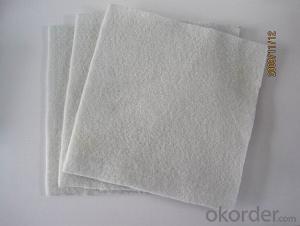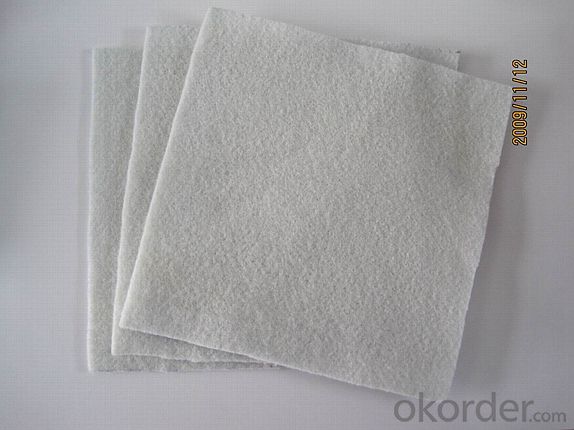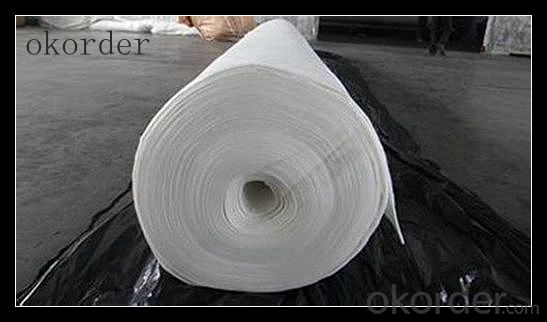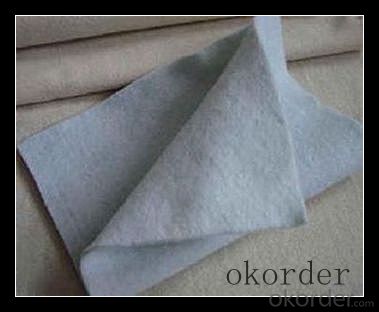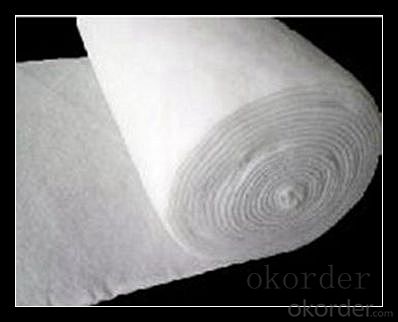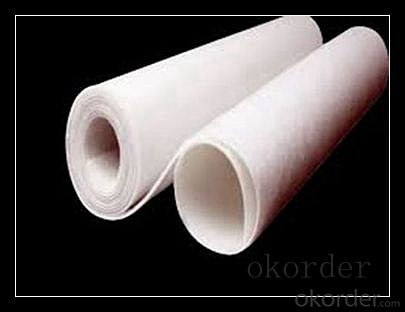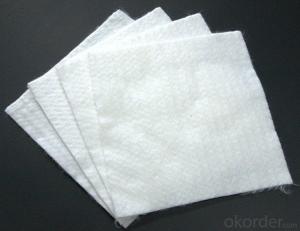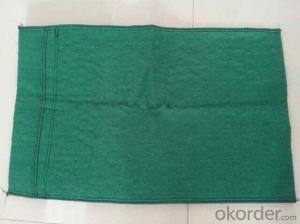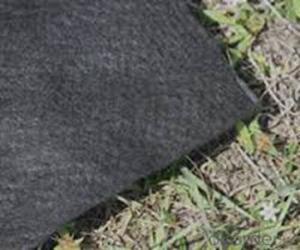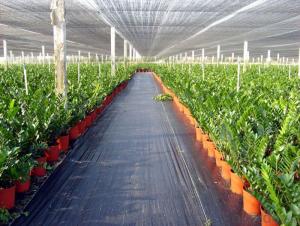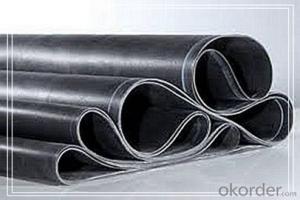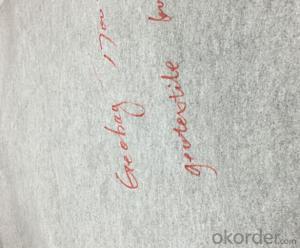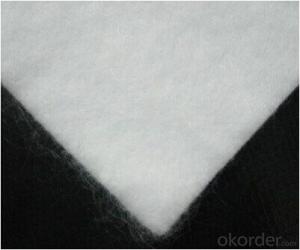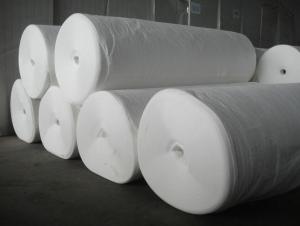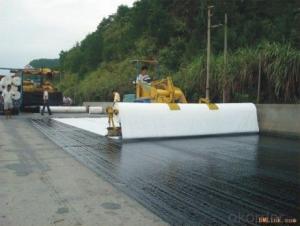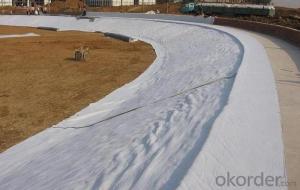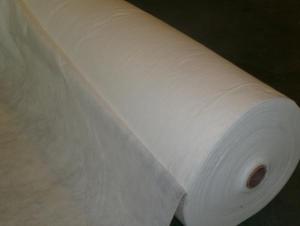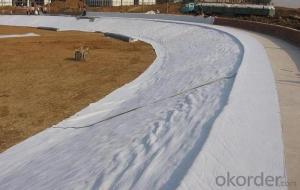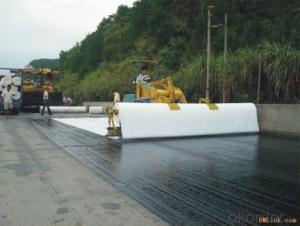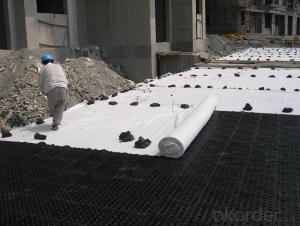4 Oz Non Woven Geotextile Fabrics with Excellent Quality
- Loading Port:
- China main port
- Payment Terms:
- TT OR LC
- Min Order Qty:
- 1000 g/m²
- Supply Capability:
- 10000000 g/m²/month
OKorder Service Pledge
OKorder Financial Service
You Might Also Like
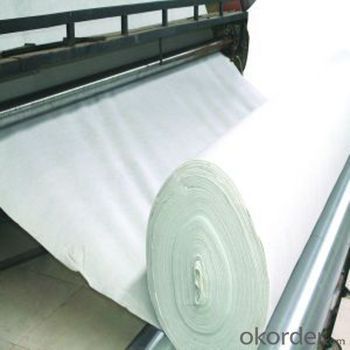
Geotextile :
Geotextiles are permeable fabrics which when used in association with soil, have the ability to separate, filter, reinforce, protect or drain.
Geotextiles are made from either polypropylene or polyester and geotextile fabrics come in three basic forms: woven, needle punched (resembling felt), or heat bonded (resembling ironed felt). In Australia the most popular geotextile used is the polyester needle punched fabric, as the polyester is more UV stable than the polypropylene material.
Filter: Geotextile fabric is an excellent filtering medium as it allows fluid to pass through the fabric yet retains fine particles, as you would see in an aggy drain. Great for wrapping perforated pipes and rock to create a path for fluid to pass though yet keep the fines out. Another large use in Australia is in the construction of a landfill cell, where filter geotextile sits atop the filtration rock separating the waste material placed on top allowing the leachate to pass through down to the liner.
Separate: Geotextile when used as a separation layer prevents two different fill materials such as aggregate and soil from combining. When used correctly the geotextile will increase the life span of the civil project, allowing the two separate layers to perform as designed for longer.
Protection: Geotextile when used as a protection layer acts as a cushioning barrier between the geosynthetic lining system and other layers of the dam or landfill cell. Generally the larger mass rolls of geotextile provide the best cushioning protection. As a protection barrier it helps prevent puncturing and leaks from external forces coming into contact with the liner.
It is widely used in river , coast ,harbour, highway ,railway, wharf, tunnel, bridge and other geotechnical engineering. The woven geotextile is a invaluable product and can be separation, reinforcement , protection and other.
Our Service
1.On a regular basis or as per your request,we entrust national testing agencies to conduct quality inspections
2. Strictly in accordance with the ISO9001-2008 international quality system standard,we monitor and manage the whole process throughout production,quality testing,and measurement to ensure product quality
3. For quality-related construction delay or substandard construction(except for damage or losses due to customer’s responsibility or irresistible natural disasters),we have refunding,replacement,and repair services.We will respond to customers’ feedbacks on quality issues within 24 hours.
4.In order to provide customers with comprehensive technical support,we will provide technical and other related information upon request in a timely manner.
5.In required,we will appoint specialized technicians to the construction site to give technical trainings to construction people,and offer technical guidance throughout the whole construction process.
6.For damage due to shipment and delivery,after we receive the complaint,we will check the issure through provided pictures and videos.If our responsibility is confirmed,we wil offer free replacement.
7.When the construction is completed,as your request,our technical staff may participate in the final acceptance.
FAQ:
Q: What kind of payments does jenor support?
A: T/T, L/C, Cash are accepted.
Q: Do you charge for the samples?
A: Accordeing to our company policy, the samples are free, we only charge the freight fee. And we will return the freight fee during the next order.
Q: Can you produce according to customers' design?
A: Sure, we are professional manufacturer, OEM and ODM are both welcome.
Q: Do you have other products?
A: Yes, please check the pictures:
- Q: What is the purpose of using geotextiles?
- The purpose of using geotextiles is to provide a wide range of functions in different construction and engineering applications. These functions include soil stabilization, erosion control, filtration, drainage, separation, and reinforcement. Geotextiles act as a protective barrier, improving the performance and lifespan of infrastructure projects such as roads, embankments, retaining walls, and landfills.
- Q: Can geotextiles be used in groundwater control?
- Yes, geotextiles can be used in groundwater control. Geotextiles are permeable fabrics that can be used to filter, separate, reinforce, or drain soil and water. In groundwater control, geotextiles can be used as a barrier to prevent the migration of fine particles and to control the flow of groundwater. They can be employed in various applications such as drainage systems, erosion control, and construction projects to manage and control groundwater effectively.
- Q: What are geotextiles?
- Geotextiles are synthetic materials used in civil engineering and construction projects for their specific properties such as filtration, separation, reinforcement, and drainage. They are permeable fabrics that are designed to improve the performance and longevity of soil and other materials in various geotechnical applications.
- Q: The difference between short wire geotextile and filament geotextile
- Geotextile is a collectively, he includes filament geotextile, short wire geotextile, woven geotextile, woven geotextile, hot pressed nonwovens. Polyester filament geotextile color is mainly white, green. Gray two categories. The length of the fiber is greater than 4.5 cm. Strong strength is very high. Looks very good distinction.
- Q: What are the routine tests of geotextile geotextiles?
- The geocell is mainly the tensile strength of the tensile test lattice sheet and the peel strength of the solder joint. Geotextile according to the specific circumstances of the use of the project 1. Roadbed reinforcement, isolation is mainly tensile test tensile strength, elongation, tear strength and CBR top broken 2. Filter with the addition of these also use the vibrating screen test Equivalent pore size 3. Maintenance is mainly weight, thickness and strength
- Q: What are the key factors affecting the creep behavior of geotextiles?
- The key factors affecting the creep behavior of geotextiles include the material properties of the geotextile itself, such as its tensile strength, elongation capacity, and viscoelastic behavior. The load applied to the geotextile, including the magnitude and duration, also plays a significant role in its creep behavior. Environmental conditions, such as temperature, moisture, and UV exposure, can further influence the creep performance of geotextiles. Additionally, the installation and stress transfer mechanisms between the geotextile and adjacent soils or structures can affect its creep behavior.
- Q: How do geotextiles help with reinforcement of geotextile containers?
- Geotextiles help with the reinforcement of geotextile containers by providing strength and stability. They act as a support system, preventing the containers from collapsing or deforming under the weight of the contained material. The geotextiles also distribute the load evenly across the container, reducing stress concentration and enhancing its overall durability.
- Q: What are the specifications for geotextiles in retaining wall construction?
- The specifications for geotextiles in retaining wall construction typically include requirements such as the tensile strength, elongation, permeability, and durability of the material. The geotextiles should have sufficient strength to resist the forces exerted by the retained soil, as well as the ability to allow water to drain through the fabric. Additionally, they should be resistant to degradation from UV exposure, chemicals, and biological agents to ensure long-term performance in retaining wall applications.
- Q: How do geotextiles improve the performance of geogrids?
- Geotextiles improve the performance of geogrids by providing additional reinforcement and stabilization. They work in tandem with geogrids to enhance their strength, prevent soil erosion, and distribute loads more evenly. The geotextile acts as a separation layer, preventing the mixing of different soil layers and allowing water to flow freely, thereby reducing pore pressure. This combination enhances the overall stability, durability, and effectiveness of geogrids in various civil engineering applications.
- Q: How do geotextiles help in reducing the risk of slope failures?
- Geotextiles help in reducing the risk of slope failures by providing reinforcement and stabilization to the soil. They are used to reinforce the soil layers, prevent erosion, and improve drainage, thereby enhancing the overall stability of the slope.
Send your message to us
4 Oz Non Woven Geotextile Fabrics with Excellent Quality
- Loading Port:
- China main port
- Payment Terms:
- TT OR LC
- Min Order Qty:
- 1000 g/m²
- Supply Capability:
- 10000000 g/m²/month
OKorder Service Pledge
OKorder Financial Service
Similar products
Hot products
Hot Searches
Related keywords
